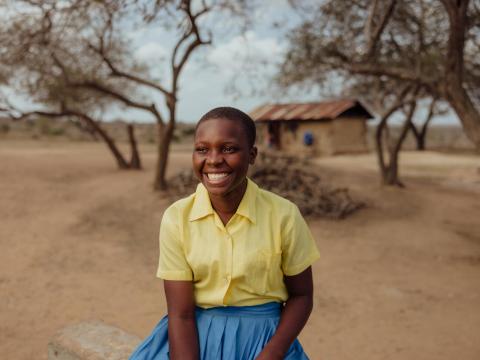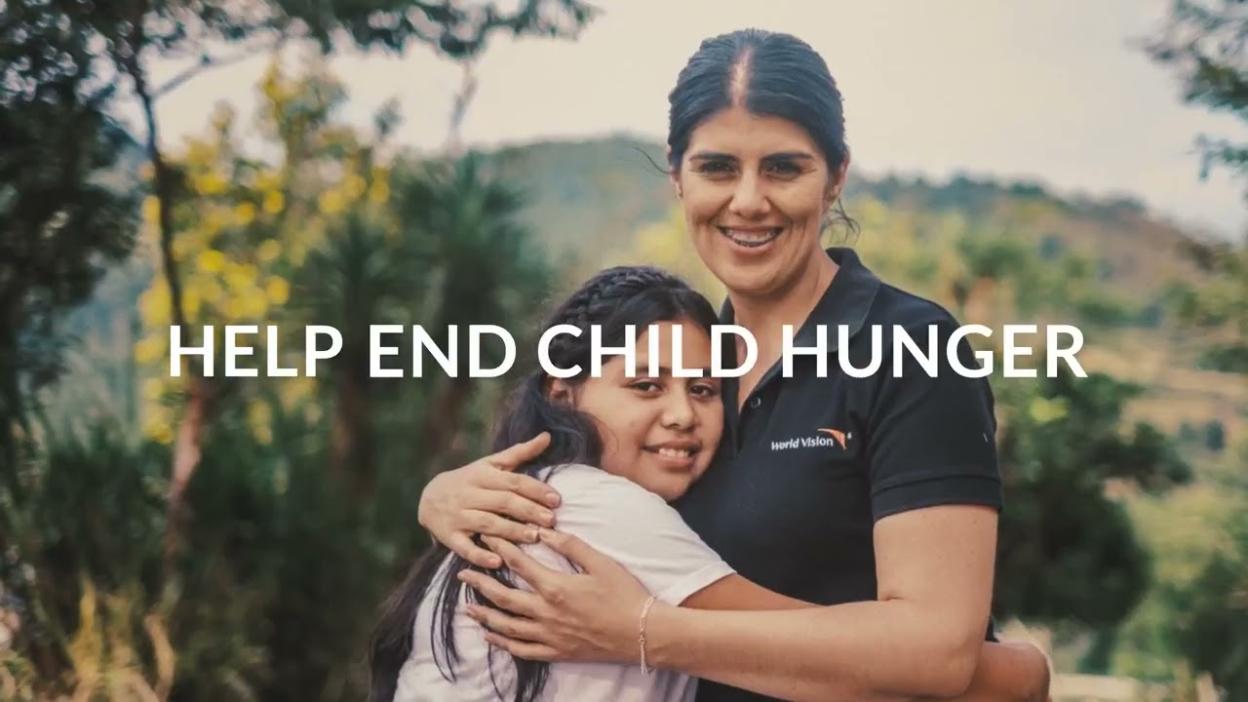@fname from @country said Enough!

The ENOUGH campaign launched across Cambodia from February to March 2025.
ENOUGH
A world where every child enjoys ENOUGH nourishing food so they can thrive
A life of plenty for every child has always been possible, but that’s not reality. Every single day, children are being forced to go without food. More than 733 million people in the world faced hunger in 2023. Shockingly, there is no exact number describing how many of those people suffering from hunger and malnutrition were children.
This is just not good ENOUGH.
Child hunger is at its worst in generations. Children are bearing the brunt of an unequal food system disrupted by conflicts and climate change. Every child deserves the food they need to develop a healthy body and mind. Every family has the right to be able to put enough of the right food on the table. We must take action immediately.
With enough people like you, we can ensure there is:
ENOUGH nutritious food
ENOUGH government money
ENOUGH political will
ENOUGH to end child hunger and malnutrition
Child-focused stories from the places World Vision works
Children will lead us. Let's listen to their voices:
We say ENOUGH – no child will suffer from hunger if we all act NOW
Now is the moment for us to join together and call for ENOUGH nutritious food for every child, sourced ethically and sustainably, enabling children to flourish in all locations.
By uniting, we can become a force to eradicate child malnutrition. Let’s come together, from every country and every background.
Children all over the world are already calling for change.
Stand with them and say: ENOUGH.
4 ways you can help end child hunger and malnutrition
Related Resources
Hunger is one of the driving forces for child labour
Read Mujeb's storySupport our programmes
FAQ
What is hunger?
Child hunger is when children go without food consistently and become undernourished or malnourished.
Many children across the globe are in urgent need of enough calories to survive in catastrophic hunger situations, extreme poverty, and vulnerability. In other circumstances, children consume too many calories from low-quality foods. These foods do not provide the necessary nutrients for their bodies and brains.
Not all children go through these extreme situations. However, insufficient and unhealthy food or a lack of vital nutrients can negatively impact a child's future development.
What is malnutrition?
Malnutrition happens when children experience deficiencies or excesses in nutrient intake. These excesses and deficiencies create an imbalance or impaired ability to utilise the essential nutrients children need to thrive. The worst cases of malnutrition can end with serious illness or even death.
Malnutrition includes 3 broad groups of conditions:
- Undernutrition, which for children specifically includes wasting (low weight-for-height), stunting (low height-for-age) and underweight (low weight-for-age).
- Micronutrient-related malnutrition, which includes micronutrient deficiencies (a lack of important vitamins and minerals) or micronutrient excess.
- Overweight (high weight-for-height), obesity (a severe form of overweight) and diet-related non-communicable diseases (e.g. diabetes).
Can malnutrition be reversed?
Yes, full recovery is possible. Since 2010, World Vision’s Community-based Management of Acute Malnutrition (CMAM) programmes have treated over 1.8 million children under 5 years of age in 31 countries.
We estimate that World Vision’s CMAM programming saved over 91,000 lives of children under 5 between 2010 and 2021. From 2010 to 2022, World Vision nutrition programmes admitted more than 700,000 children with severe wasting into therapeutic programmes or in-patient care. Over 88% fully recovered.
What causes hunger?
Every crisis is a hunger crisis. Adverse effects of climate change, such as droughts, floods, extreme storms, and unpredictable weather, have destroyed crops and incomes. COVID-19 caused lockdowns and disruptions, which led to higher prices for food and other essentials, affecting family incomes worldwide. On top of this, the impact of the war in Ukraine – the wheat basket of the world – is global. Choking off its grain exports has reduced emergency food aid to refugees, limited available food for countries dependent on grain imports, and driven up food prices everywhere.
The compounding impact of multiple crises is creating a perfect storm for the world's most vulnerable girls and boys. Families often face the difficult choice of purchasing food or meeting other essential needs for their children. These needs may include medicine, school supplies, or even a place to live.
Additionally:
- Nutrition has been historically underfunded and not a government priority. When crises hit, malnourished children are more likely to go hungry because they have no reserves to draw upon.
- Food systems are not designed or managed in consideration of existing resources and their fair and equal distribution – some get too much and waste, while others get too little. Nor are they resilient, sustainable, or people-focused, let alone child-focused.
- The global food and beverage industry continues to promote unhealthy food over more nutritious choices and significantly contributes to childhood malnutrition.
- Supply chains for the food and beverage industry, particularly in the agricultural sector, further increase child hunger. Food and beverage producers continue to work with suppliers that exploit children through child labour and keep smallholder farmers and their families in poverty due to unfair market prices, forcing families to adopt negative coping strategies that affect their children, such as child marriage.
Where is hunger happening? Where is world hunger the worst?
Children are facing food insecurity in every region of the world. Parents are queuing for food everywhere, from rural Ethiopia to urban Sydney. Food insecurity happens when people don’t have physical, social, and economic access to sufficient, safe, and nutritious food that meets their dietary needs and food preferences for an active and healthy life.
Malnutrition affects children in different ways and to various extents in different countries. Around the world, from Bangladesh to the United States, some have a surplus of food while many others have too little. Some children get school meals every day, while others miss breakfast or lunch entirely. Food goes to waste, while some families must sell their daughters to pay for their next meal. In all societies, wealthy and poor, children are eating more unhealthy foods, fuelling a growing obesity epidemic alongside peers who struggle to get enough.
We can trace children affected by hunger back to areas experiencing poverty, food insecurity, and unjust food distribution and access. Countries facing hunger crises are especially vulnerable to the effects of the 4 Cs: Conflict, Climate change, rising Costs, and the uneven socioeconomic impacts and recovery of the COVID-19 pandemic. In certain conflict zones, hunger is even used as a weapon.
Is world hunger getting worse?
Yes. Hunger is now back on the rise with spiralling food costs.
The number of people suffering from acute food insecurity has nearly doubled in the past three years. In 2019, 135 million people were experiencing dangerous levels of hunger. However, this number reached a record-breaking 258 million in 2022. These alarming figures spread across 58 different countries. Child hunger levels are the worst they’ve been in generations because of conflict and violence, climate change, and the lingering socioeconomic impacts of the COVID-19 pandemic, all of which have sent food prices beyond reach for families worldwide.
Global malnutrition rates are no less staggering. Progress has been stagnant – 148.1 million children under 5 years of age are stunted, 45 million are wasted, 13.6 million are severely wasted, and 37 million are overweight. Globally, 2 out of 3 children under age 2 don’t eat a minimally diverse diet.
How can world hunger be solved?
We believe it takes a comprehensive approach to ending world hunger and malnutrition. We need interventions targeting both the direct and indirect effects in addition to the root causes of the problems. It will take increased awareness to influence the public discourse and high-level conversations around the topic.
To prevent hunger, we need to address gender inequality and invest in solving gender issues that affect malnutrition. Girls who are going hungry are also more likely to see their childhoods end early in child marriage. This is aside from two out of three girls and women suffering from micronutrient deficiencies, often leading to serious and long-term health consequences.
Beyond addressing unjust and inequitable food systems, we must also strengthen health systems, improve community health infrastructure, build community resilience and sustainable livelihoods, promote climate-smart agricultural practices, and ensure children have access to education and are protected from violence.
If we all come together and act now, we can stop hunger, famine, and starvation.
Can world hunger be solved with money?
Money alone is not enough to solve world hunger. We believe that children should be at the centre of any solution. Global hunger policies should give them a voice.
We should include children in hunger and nutrition statistics worldwide and in each country. This will help improve the food support they receive, such as emergency food assistance, school meals, and community health services. It will also encourage more investment in ending child hunger and malnutrition globally.
We also want more children to enjoy better food security and nutrition. Phase I of our Global Hunger Response aims to raise US$2 billion to assist communities experiencing acute hunger and the threat of famine. We have already reached tens of millions of people with life-saving assistance, access to food, clean water, emergency health and nutrition services, and protection and resilience-building activities.
Generous donors have supported us in providing access to food and life-saving services to those in need. Still, we are convinced that money alone cannot eradicate global hunger, so we are advocating for each of these transformative actions:
- Take concrete steps to improve and step-up resources and efforts to fight the growing threat of famine in countries at greatest risk;
- Make and fulfil commitments to strengthen early prevention, detection, and treatment of child wasting in high burden contexts;
- Finance efforts to break the cycle of cyclical food crises and strengthen the resilience of communities at greatest risk.
We've had ENOUGH. Have you?
How does child hunger affect child development?
Poor nutrition in the first 1,000 days of a child's life - between conception and age 2 - causes poor brain and physical development. Those who survive face lasting development and health consequences, including a higher risk of stunting, a lower IQ, and an increased risk of obesity and diabetes.
As children grow, nutritious food protects them from common illnesses and provides them with the fuel to learn. Childhood is a window of opportunity to give the next generation every opportunity to be resilient and thrive.
If we don’t act now, a generation of vulnerable children will die or not reach their potential. Too hungry to focus in school, so poor they are forced into work, or married off in the hope that one less belly at home will mean everyone else can survive just a little longer. Chronic malnutrition will keep them from reaching their full potential as they grow, limiting their development.
Who is most affected by world hunger?
Hunger and malnutrition affect the most vulnerable groups, like those living in conflict zones; experiencing climate shocks, such as droughts or flooding; or who have been forcibly displaced. Children are the most at risk of experiencing the direct and indirect impacts of hunger; but women and girls are the ones who suffer the most.
Children in fragile or humanitarian situations have limited access to enough nutritious food. This is particularly true for those in their first 1,000 days, from conception to 2 years old. These children are especially vulnerable to lifelong effects of severe malnutrition or even death.
In mid-2022, UNICEF estimated that almost 8 million children in 15 crisis-hit countries were suffering from severe wasting, with this figure increasing devastatingly quickly – one additional child joined this macabre group every single minute – between January and June 2022.
Out of 45 million children who suffered from wasting in 2022, 13.6 million were severely wasted – the most life-threatening form of undernutrition in early childhood, which increases children’s risk of death by preventable disease by up to 11 times. Only 1 in 5 children who require life-saving treatment for wasting currently receive it, leading to the deaths of 1 million children annually.
This is unacceptable in a world with abundant resources.
World Vision leaders share their insights
We can’t end hunger and malnutrition alone
We are cultivating partnerships and engagement to collectively address issues related to child hunger & malnutrition. Here are some of our valued partners:
































